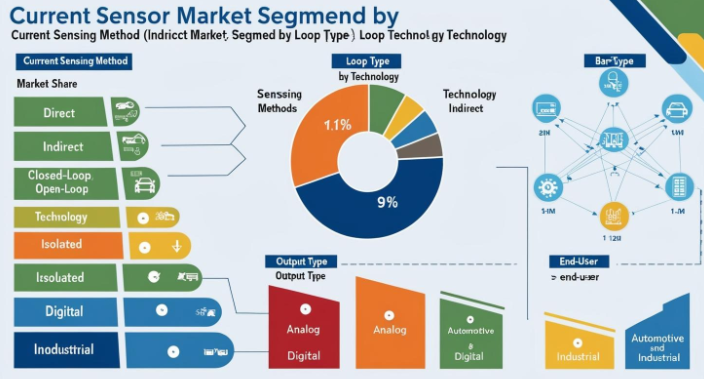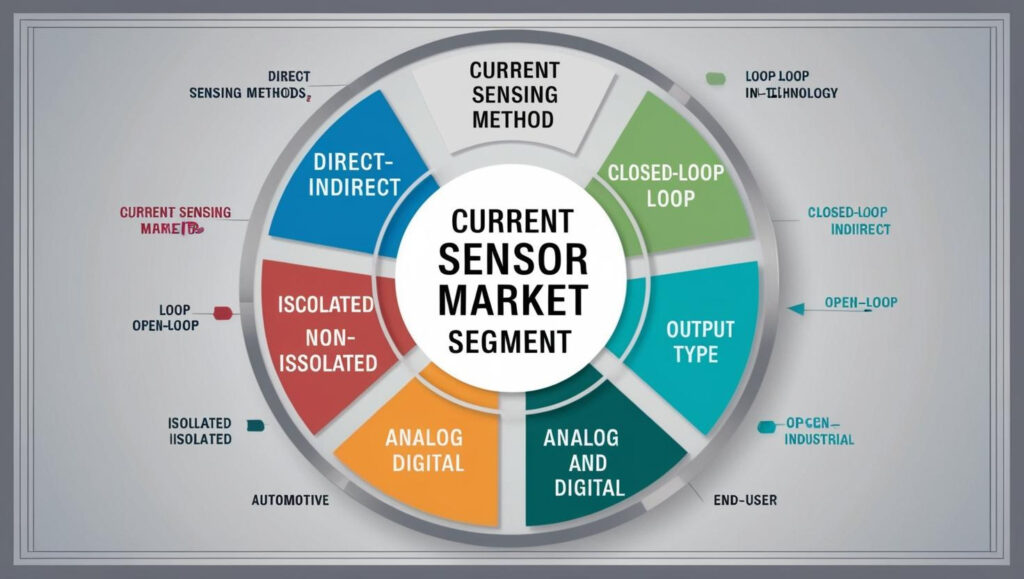The global shift towards electric vehicles (EVs) is reshaping numerous industries, including the current sensor market. As EV adoption accelerates, the demand for high-precision current sensors is surging due to their critical role in battery management systems (BMS), motor control, and charging infrastructure. While this transition presents significant opportunities, it also brings challenges that industry players must navigate. This article explores the impact of EV adoption on the current sensor market, highlighting the opportunities and challenges that lie ahead.
Download PDF Brochure @ https://www.marketsandmarkets.com/pdfdownloadNew.asp?id=26656433

Opportunities for the Current Sensor Market
The rapid expansion of EV technology is driving innovation and growth in the current sensor market. Key opportunities include:
1. Growing Demand for Battery Management Systems (BMS)
- Current sensors play a vital role in monitoring and optimizing battery performance in EVs.
- Advanced shunt-based and Hall-effect sensors help measure real-time energy flow, preventing overcharging and extending battery life.
2. Expansion of EV Charging Infrastructure
- The rise of fast-charging stations necessitates highly accurate current sensors to ensure efficient power delivery and safety.
- Smart charging systems leverage IoT-enabled current sensors for dynamic power adjustments.
3. Increased Vehicle Electrification and Motor Control Applications
- Modern EV powertrains require precise current sensing for efficient motor control and energy management.
- Magnetoresistive (MR) and Rogowski coil sensors offer high-precision measurement, enhancing motor efficiency and power optimization.
4. Government Policies and Incentives
- Regulatory mandates promoting zero-emission vehicles are driving investment in advanced EV power systems.
- Subsidies and tax benefits encourage EV adoption, further stimulating demand for current sensing solutions.
5. Integration with AI and IoT for Smart Monitoring
- AI-powered predictive maintenance systems use real-time current data to enhance EV performance.
- IoT-enabled current sensors improve energy efficiency, diagnostics, and fault detection.

Challenges Facing the Current Sensor Market
Despite the promising opportunities, several challenges need to be addressed to fully leverage EV-driven market growth:
1. High Cost of Advanced Current Sensors
- The development of high-precision, low-drift sensors involves significant R&D investments.
- Cost-sensitive markets may find advanced sensor solutions expensive, slowing adoption.
2. Integration Complexity in EV Power Systems
- Ensuring seamless sensor integration with EV power electronics requires precise engineering.
- Compatibility issues between different sensor types and control units can pose technical challenges.
3. Scalability Issues and Supply Chain Constraints
- As demand for EV sensors rises, supply chain disruptions may impact production capabilities.
- Ensuring a stable supply of raw materials for sensor manufacturing is critical to meeting global demand.
4. Heat and Electromagnetic Interference (EMI) Challenges
- EV environments expose current sensors to high temperatures and EMI, affecting accuracy and longevity.
- Robust shielding and thermal management solutions are essential to maintain sensor reliability.
5. Standardization and Regulatory Compliance
- The lack of global standardization for EV current sensors complicates product development and market entry.
- Ensuring compliance with regional safety and efficiency regulations requires additional resources.
Future Outlook
The EV revolution is expected to drive significant advancements in current sensing technology. As sensor manufacturers invest in AI integration, miniaturization, and energy-efficient designs, the market will continue to expand. Companies that successfully address cost, integration, and scalability challenges will be well-positioned to capitalize on the growing demand for EV-compatible current sensors.
The rising adoption of electric vehicles presents immense opportunities for the current sensor market, particularly in battery management, motor control, and charging infrastructure. However, challenges such as high costs, integration complexities, and supply chain constraints must be tackled to ensure sustainable growth. As the EV market evolves, the role of innovative, high-precision current sensors will become even more crucial in shaping the future of electric mobility.